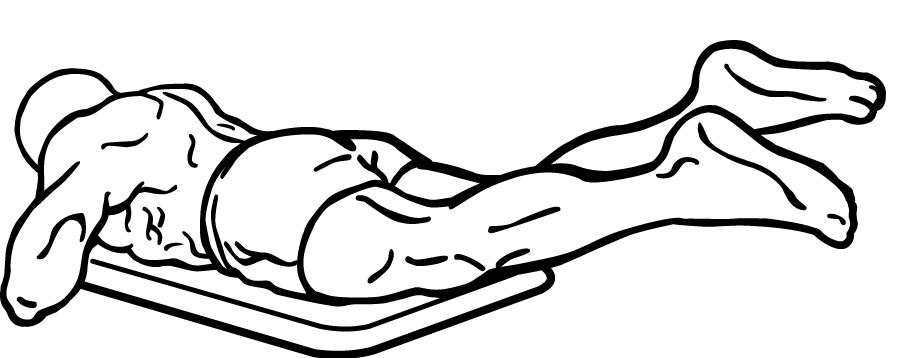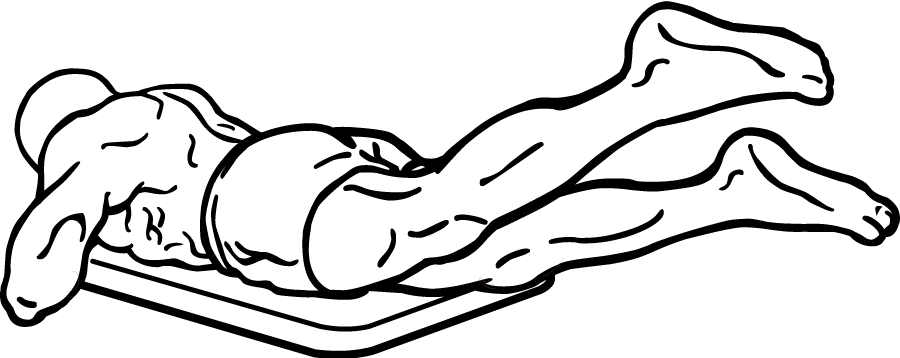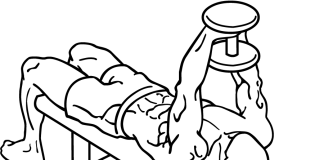Last Updated on September 30, 2022
If you’re looking for a simple yet effective exercise to strengthen your legs, particularly your quadriceps and hamstrings, then look no further than the Flutter Kick. Whether you’re an athlete, fitness enthusiast, or someone just starting their fitness journey, flutter kicks can play a significant role in building lower body strength and improving endurance.
The flutter kick is a low-impact exercise that primarily targets your quads, hamstrings, and core, and it doesn’t require a lot of equipment, making it a convenient addition to any workout routine. But before we dive deeper into its benefits, let’s break down the steps and form to ensure you’re doing it safely and effectively.
What Are Flutter Kicks?
Flutter kicks are a dynamic movement that mimics a swimming motion on dry land. This exercise not only strengthens your quadriceps and hamstrings but also engages your core muscles, improves hip flexibility, and enhances lower body endurance. By alternating between both legs in a controlled manner, you stimulate multiple muscle groups at once.
While commonly associated with swimmers, flutter kicks can be performed by anyone looking to increase leg and core strength, improve balance, and even enhance cardiovascular endurance. However, as with any exercise, performing it with the right technique is crucial to avoid injury and maximize its benefits.
Muscles Worked in Flutter Kicks
- Quadriceps: The quadriceps, or quads, are the large muscles located at the front of your thighs. They play a vital role in knee extension and are heavily engaged during the upward kicking motion in flutter kicks.
- Hamstrings: These muscles are located at the back of your thighs and are responsible for knee flexion and hip extension. They work alongside the quads during the kicking motion.
- Glutes: Your gluteal muscles (buttocks) assist in stabilizing your hips during the exercise, especially when you’re lifting and lowering your legs.
- Core Muscles: The rectus abdominis, obliques, and lower back muscles help maintain balance and stability throughout the movement. Engaging your core during flutter kicks ensures that you perform the exercise with proper alignment and reduces strain on your lower back.
- Hip Flexors: Located in the front of your hips, the hip flexors help lift your legs during the kicking motion. Strengthening these muscles can improve your overall mobility and hip function.
How to Perform Flutter Kicks: Step-by-Step Guide
To maximize the benefits of flutter kicks and avoid injury, it’s essential to follow these steps carefully. Here’s a breakdown of the correct technique:
Step 1: Setup and Positioning
Lie face down on a flat bench, positioning your hips at the edge of the bench. Your torso should be supported, and your legs should hang off the edge of the bench. Make sure to grip the bench with your hands, holding onto either side for stability.
This position allows your legs to move freely without restriction, providing the full range of motion needed for the exercise.
Step 2: Engage Your Core and Glutes
Before you start the kicking motion, draw your abs in, squeeze your glutes, and engage your hamstrings. Engaging these muscles is crucial because it helps stabilize your lower back and ensures that you’re not overly relying on your hip flexors.
Keeping your core engaged will help you maintain a stable position on the bench throughout the movement, preventing unnecessary arching or strain in your lower back.
Step 3: Kick Back and Up
Begin the exercise by kicking one leg back and up while keeping your hips firmly planted on the bench. Make sure the motion is controlled and smooth, not jerky. As you lift your leg, focus on squeezing your hamstrings and glutes.
Keep your toes pointed and legs straight as you lift. The range of motion doesn’t need to be excessive; aim for a natural lift that works within your body’s limits.
Step 4: Alternate Legs
Lower the lifted leg back to its starting position and immediately kick the other leg back and up. Alternate between both legs in a continuous fluttering motion, just as you would when swimming. Maintain control throughout the exercise, focusing on even and fluid movements rather than rushing through the reps.
Step 5: Maintain Breathing and Posture
Throughout the exercise, ensure you’re breathing consistently. Inhale as you lower one leg and exhale as you lift the other. This will help you maintain a steady rhythm and prevent you from holding your breath, which can increase tension in your body.
Additionally, pay attention to your posture. Your back should remain flat against the bench with no arching, and your hips should stay in contact with the bench at all times. This posture ensures that the tension stays in your legs, glutes, and core rather than shifting to your lower back.
Common Mistakes to Avoid
When performing flutter kicks, it’s easy to make small errors that can lead to inefficient movement or even injury. To get the most out of this exercise, avoid the following mistakes:
- Overarching the Lower Back: One of the most common mistakes people make during flutter kicks is allowing their lower back to arch. This can put unnecessary strain on your spine. Always engage your core to keep your back flat and supported throughout the movement.
- Using Momentum: Flutter kicks should be controlled movements, not rapid, jerky motions. Using momentum reduces the effectiveness of the exercise and increases the risk of injury. Focus on smooth and deliberate leg lifts rather than rushing through the reps.
- Inadequate Core Engagement: If you don’t engage your core properly, you may find your hips lifting off the bench or your lower back bearing too much of the load. This can result in lower back pain. Always engage your abs to maintain stability.
- Lifting Too High: There’s no need to kick your legs excessively high. Overextending can strain your lower back and hips. A controlled, moderate range of motion is sufficient to engage the target muscles effectively.
- Neglecting to Breathe: It’s easy to forget to breathe during exercises that require focus on form. Holding your breath can increase tension and fatigue. Make sure to breathe deeply and consistently throughout the exercise.
The Benefits of Flutter Kicks
Incorporating flutter kicks into your regular workout routine offers several key benefits:
- Strengthens the Quads and Hamstrings: Flutter kicks effectively engage both the quadriceps and hamstrings, helping you build strength and endurance in these muscles. This is especially beneficial for athletes or anyone looking to improve lower body power.
- Enhances Core Stability: Since flutter kicks require you to maintain a stable core throughout the movement, they also improve core strength. A strong core not only supports your lower back but also contributes to better posture and overall body balance.
- Improves Hip Flexibility: The range of motion involved in flutter kicks helps improve hip flexibility and mobility. This can be particularly helpful for those who spend long periods sitting, as it counteracts the stiffness and tightness that can develop in the hips over time.
- Boosts Cardiovascular Endurance: Performing flutter kicks at a faster pace can turn this exercise into a cardiovascular challenge, increasing your heart rate and boosting your endurance over time.
- Convenience and Accessibility: Flutter kicks can be performed virtually anywhere, with minimal equipment required. All you need is a bench or a flat surface to lie on, making this exercise perfect for at-home workouts.
- Low Impact: For individuals with joint issues or those recovering from injury, flutter kicks provide a low-impact alternative to more intense lower body exercises like squats or lunges.
Variations of Flutter Kicks
Once you’ve mastered the basic form of flutter kicks, you can try these variations to further challenge yourself and keep your workouts exciting:
1. Flutter Kicks on a Stability Ball
Instead of lying flat on a bench, use a stability ball to add an extra balance challenge. By resting your hips on the ball, you’ll engage your core even more to maintain stability while performing the kicks.
2. Weighted Flutter Kicks
For those looking to increase the intensity, try adding ankle weights. The added resistance will make your legs work harder, further strengthening your quads, hamstrings, and glutes.
3. Flutter Kicks in the Pool
Take your flutter kicks into the water to reduce the impact on your joints while still providing resistance for your legs. Pool exercises are an excellent option for those with joint pain or arthritis.
4. Seated Flutter Kicks
You can perform flutter kicks while seated on the edge of a chair or bench. This variation targets the hip flexors and core muscles even more, as you have to maintain stability while performing the exercise.
5. Vertical Flutter Kicks
Instead of lying face down, perform flutter kicks while lying on your back. Lift your legs slightly off the ground and flutter kick them in the air while keeping your core engaged. This variation targets your lower abs in addition to your legs.
How to Incorporate Flutter Kicks into Your Workout Routine
Flutter kicks can be easily incorporated into various types of workouts, whether you’re focusing on strength, endurance, or flexibility. Here are a few ways to include them in your routine:
- As a Warm-Up: Use flutter kicks to activate your quads, hamstrings, and core at the beginning of your workout. Perform 2-3 sets of 20-30 seconds to get your muscles warmed up and ready for more intense exercises.
- As Part of a Leg Circuit: Add flutter kicks to your leg workout routine alongside exercises like lunges, squats, and deadlifts. Perform 3 sets of 15-20 reps on each leg to complement other leg-strengthening movements.
- As a Core Finisher: Include flutter kicks at the end of your workout as a core finisher. Combine them with other core exercises like planks, Russian twists, or bicycle crunches for a killer ab burn.
- During Active Recovery: Since flutter kicks are a low-impact exercise, they’re great for active recovery days when you still want to engage your muscles without putting too much strain on your joints.
Why Flutter Kicks Should Be a Staple in Your Routine
Flutter kicks may seem simple, but they pack a punch when it comes to strengthening your legs, core, and hips. With the ability to target multiple muscle groups simultaneously, this exercise is a time-efficient way to enhance your overall lower body strength and endurance.
Whether you’re an athlete, a fitness enthusiast, or just someone looking to improve mobility and strength, flutter kicks are a versatile and accessible exercise that can be done anywhere. By incorporating them into your routine, you’ll not only improve your leg and core strength but also enjoy the added benefits of improved flexibility, better posture, and increased endurance.
So, next time you’re looking for an exercise that works your quads, hamstrings, and core all at once, give flutter kicks a try. You’ll be surprised at how such a simple movement can deliver such powerful results!








